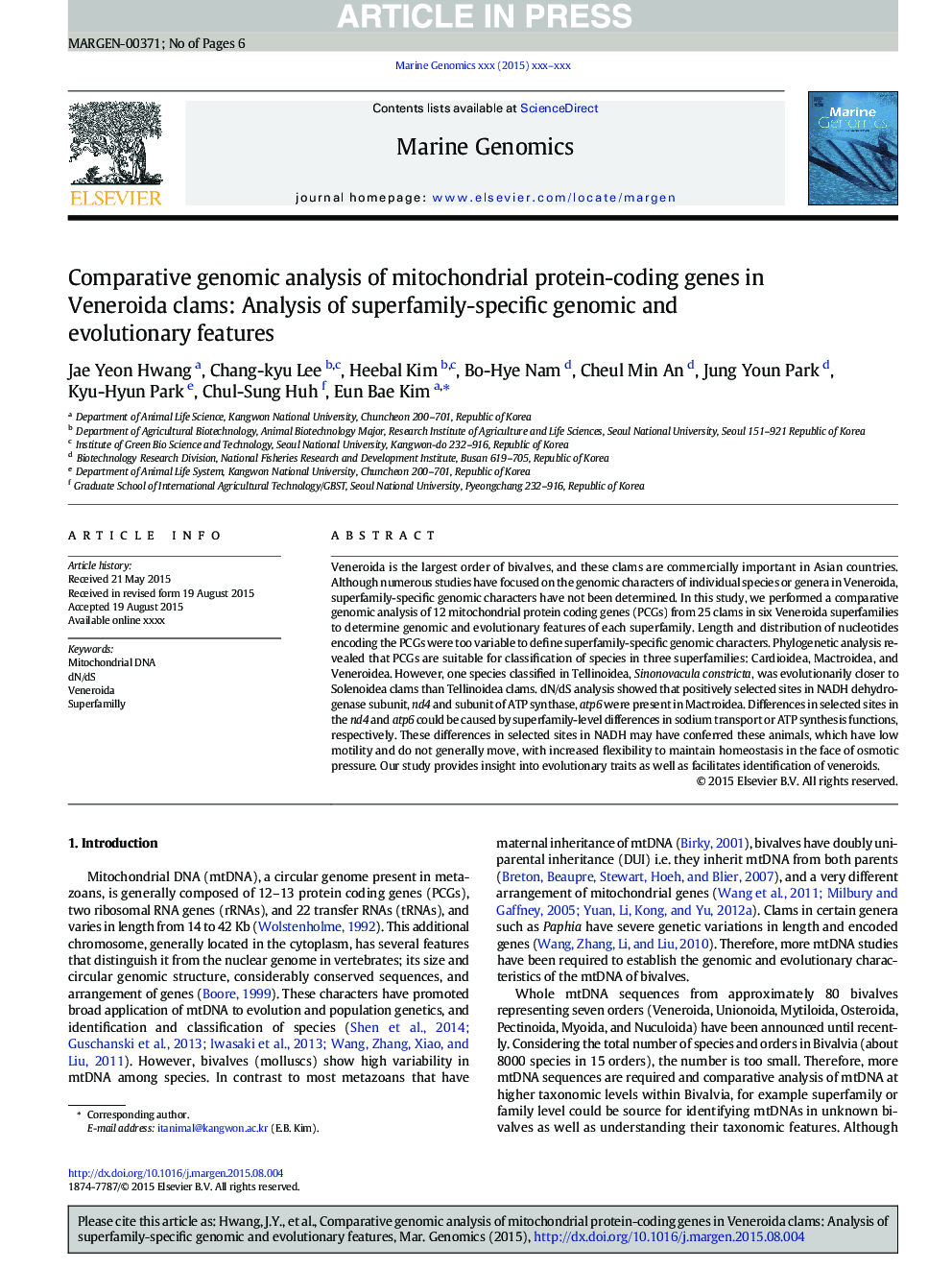| Article ID | Journal | Published Year | Pages | File Type |
|---|---|---|---|---|
| 10877925 | Marine Genomics | 2015 | 6 Pages |
Abstract
Veneroida is the largest order of bivalves, and these clams are commercially important in Asian countries. Although numerous studies have focused on the genomic characters of individual species or genera in Veneroida, superfamily-specific genomic characters have not been determined. In this study, we performed a comparative genomic analysis of 12 mitochondrial protein coding genes (PCGs) from 25 clams in six Veneroida superfamilies to determine genomic and evolutionary features of each superfamily. Length and distribution of nucleotides encoding the PCGs were too variable to define superfamily-specific genomic characters. Phylogenetic analysis revealed that PCGs are suitable for classification of species in three superfamilies: Cardioidea, Mactroidea, and Veneroidea. However, one species classified in Tellinoidea, Sinonovacula constricta, was evolutionarily closer to Solenoidea clams than Tellinoidea clams. dN/dS analysis showed that positively selected sites in NADH dehydrogenase subunit, nd4 and subunit of ATP synthase, atp6 were present in Mactroidea. Differences in selected sites in the nd4 and atp6 could be caused by superfamily-level differences in sodium transport or ATP synthesis functions, respectively. These differences in selected sites in NADH may have conferred these animals, which have low motility and do not generally move, with increased flexibility to maintain homeostasis in the face of osmotic pressure. Our study provides insight into evolutionary traits as well as facilitates identification of veneroids.
Keywords
Related Topics
Physical Sciences and Engineering
Earth and Planetary Sciences
Earth and Planetary Sciences (General)
Authors
Jae Yeon Hwang, Chang-kyu Lee, Heebal Kim, Bo-Hye Nam, Cheul Min An, Jung Youn Park, Kyu-Hyun Park, Chul-Sung Huh, Eun Bae Kim,
